Retracing Your Steps: Bladder Cancer Treatment Decisions
One of the first things people diagnosed with bladder cancer wonder about is what their treatment journey will look like. Their minds might flash to images of long hours in a chemotherapy chair and months spent in a hospital bed. However, the treatment journey for people with bladder cancer can vary dramatically from person to person. We conducted a survey of people who have been diagnosed with bladder cancer and their caregivers to gain an inside perspective on what the treatment pathway really looks like – from making the decisions to receiving the treatments, enduring side effects, and ultimately reflecting back on those choices. We wanted to share these insights with our community and thank you for helping us better understand how treating bladder cancer can affect a person’s life.
Factors that influenced treatment decisions
Many people who hear “cancer” immediately think of chemotherapy, but doctors will discuss all of the possible options with people who are diagnosed with bladder cancer. In order to make a decision, patients often rely on their doctor’s recommendation, but there are other factors that our respondents reported that influenced their decisions.
Most common treatment choices
Our survey found that surgery was the most common first-line treatment for those with bladder cancer, with most people undergoing a TURBT before receiving other treatments like BCG, chemotherapy, or radiation therapy. If the TURBT and other treatments did not successfully get rid of the cancer, patients may have undergone a cystectomy to remove their bladders and the cancer along with it.
Caregivers played a role in treatment decisions
Selecting an appropriate treatment can be an extremely personal choice, but many patients involved their caregivers in their decision-making process. Caregivers often went on to help their loved ones manage their medications and assist in many different aspects of their care.
Enduring treatment side effects
Most treatments come with the risk of side effects, and some side effects are more difficult to manage than others. Those who took our survey reported their most common side effects after surgery and other treatments, with fatigue being the most burdensome.
The feeling of making the “right” decision for you
Enduring treatment, surgeries, and side effects is a physical and emotional roller coaster for people with bladder cancer and their loved ones. However, getting rid of the cancer can be seen as a second chance at life, and most people are excited to receive the “all clear” and report satisfaction with the treatment pathway that led them there.
The Bladder Cancer In America 2018 survey was conducted online from May through August of 2018. Of the 401 people who completed the survey, 332 were people who have been diagnosed with bladder cancer and 69 were caregivers of people with bladder cancer.
Community Poll
Have you taken our In America survey yet?
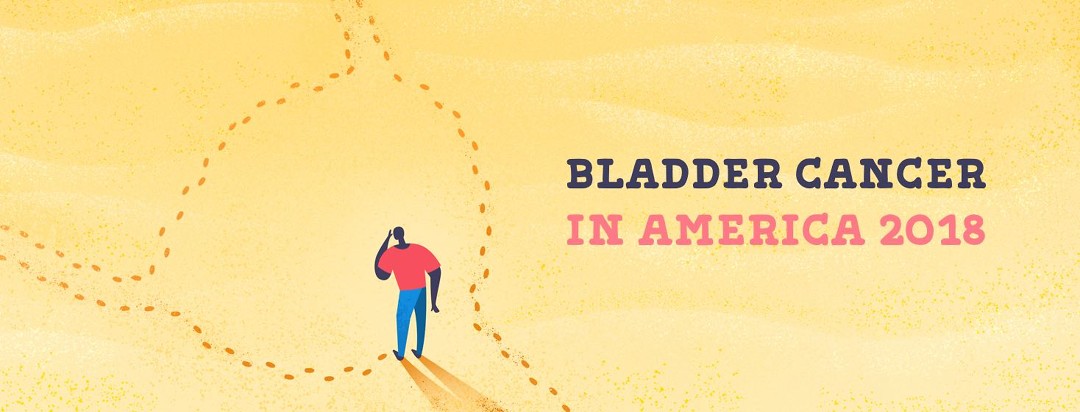
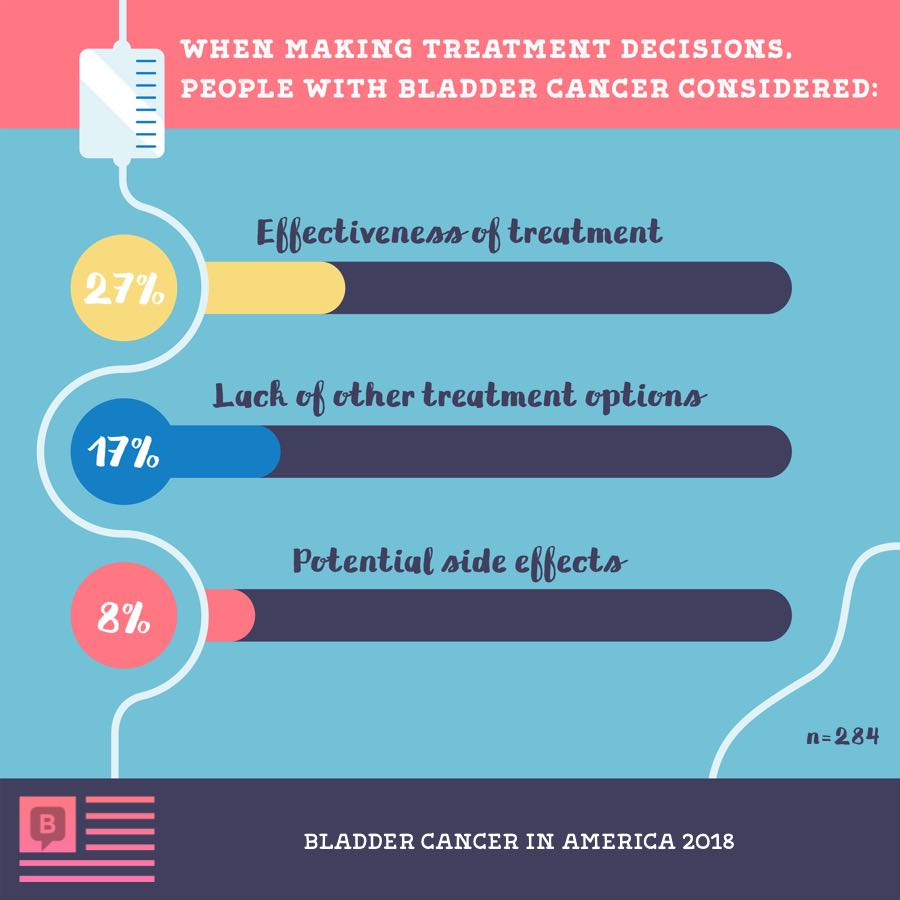

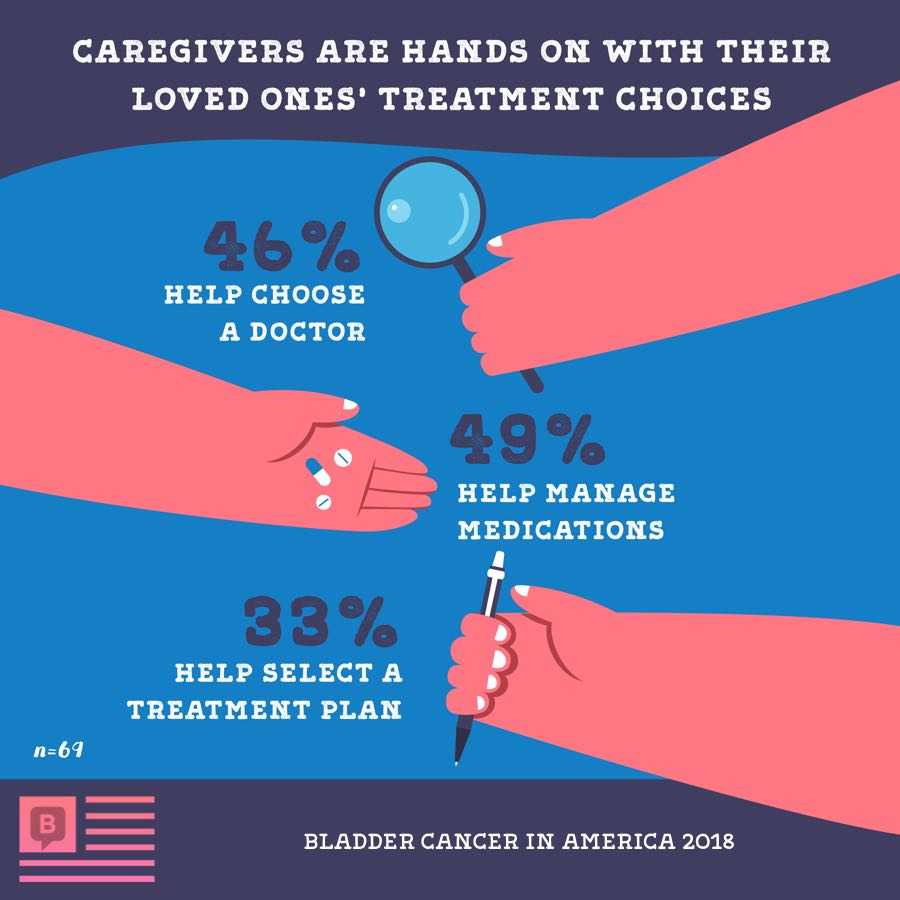
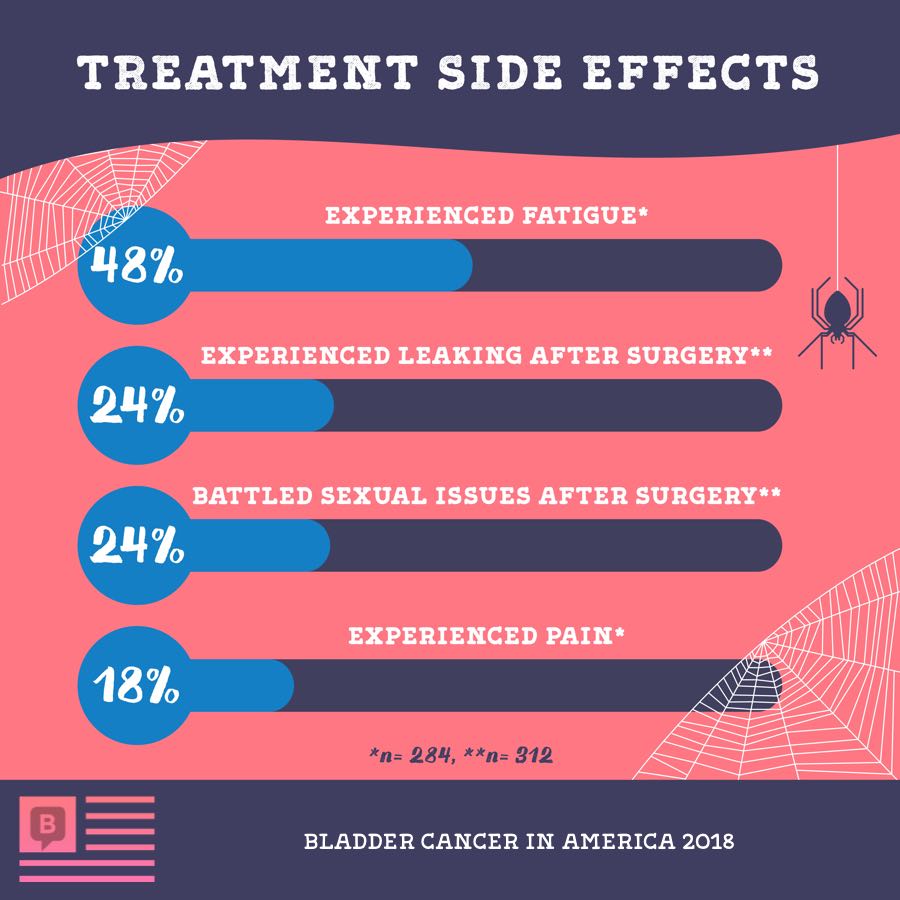
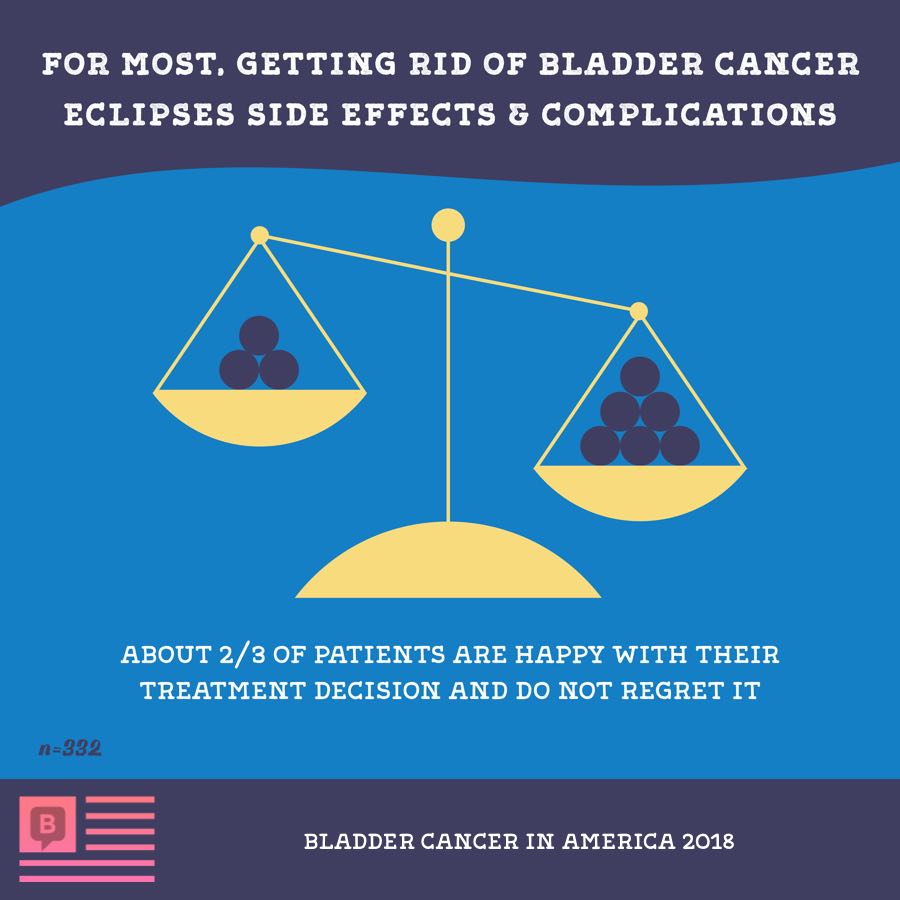
Join the conversation